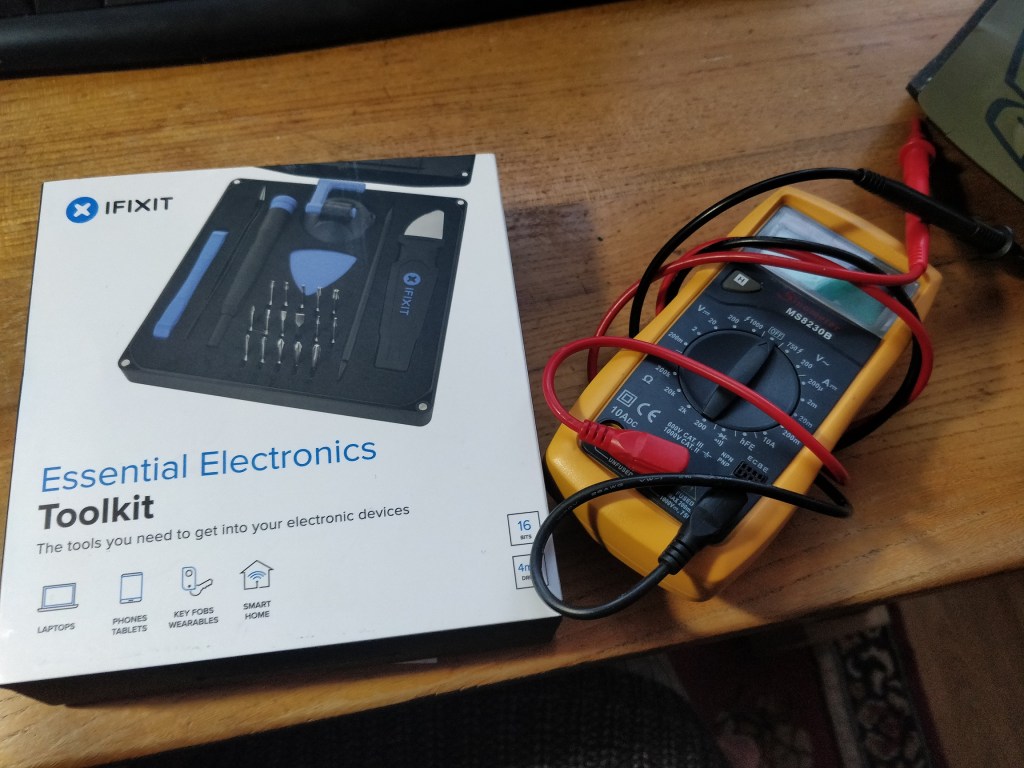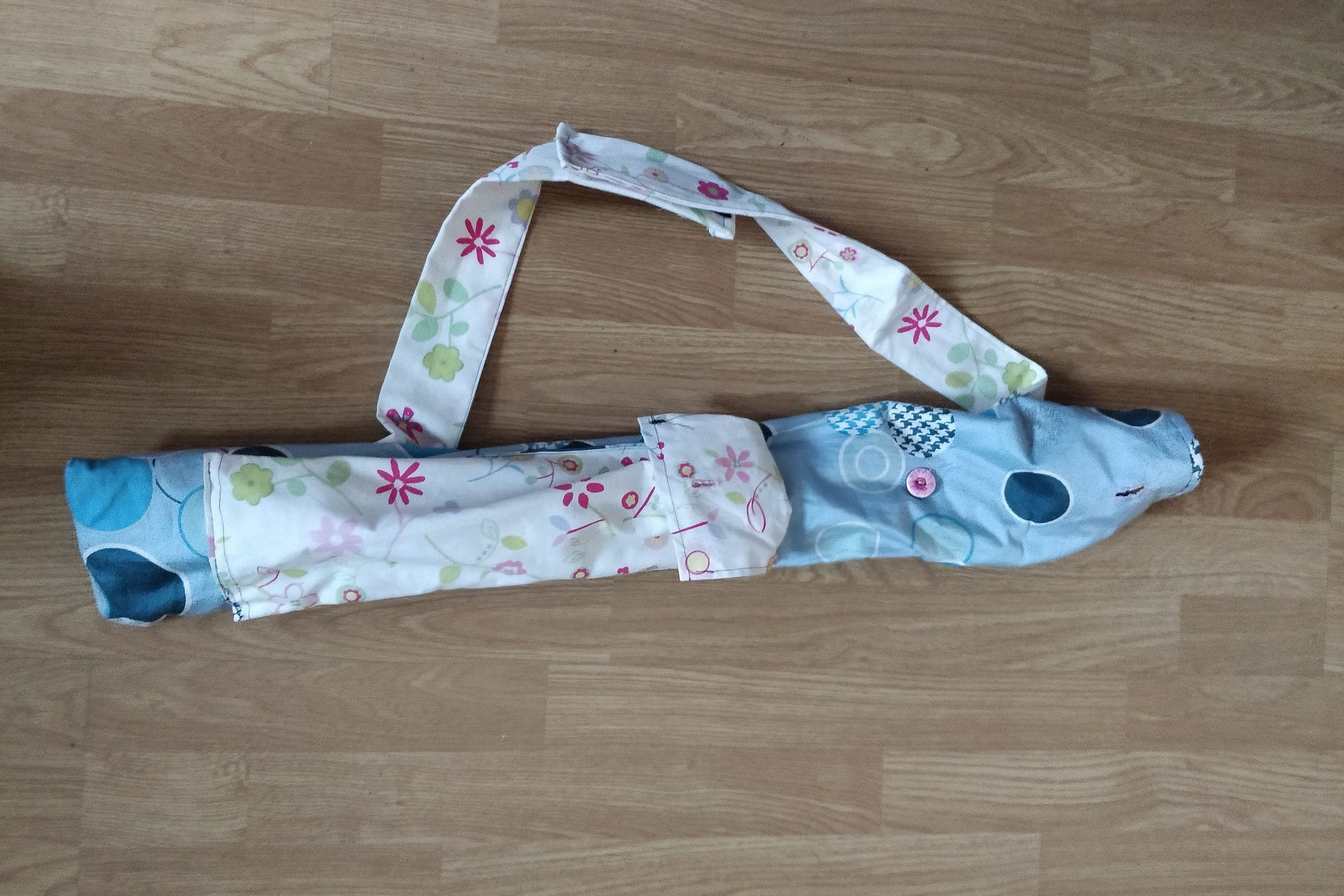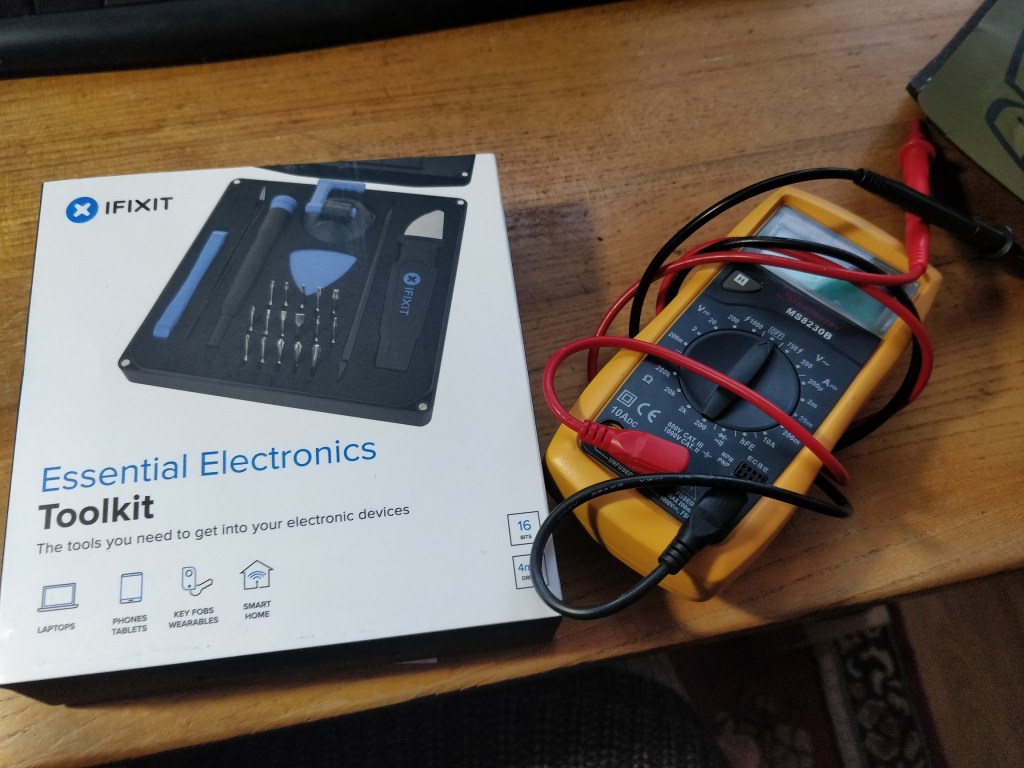Thank You Eco-Chic

I am not good at sewing. My most impressive trick is button sewing, which my Mum taught me, and was the only thing that garnered praise from the terrifying Head of Wardrobe when I was training at RADA. With every other skill I acquired on that course – taking in a hem, minor adjustments, endless sewing of backdrops etc. – my work was as subtle as the Eiffel Tower. (Although, in fairness, in theatre… you can get away with a lot. Especially if it’s a moody show and the lighting designer is having a 30% kinda day.)
Despite this, I have my own sewing machine, and a small fortune has been saved with projects like sewing my own curtains, with the attitude that it didn’t matter if the stitching got a bit messy where the bobbin had run out because who would care except me? I also enjoy sewing escrima bags to carry my sticks and weapons to class – I’m still especially proud of the yellow bird-themed cotton bag with flower buttons I had for grades 4-8, complete with outside pocket for my inhaler.

However, all the actual repairs I made to my clothes were considered socially a bit unacceptable. With a slapdash attitude and a “might as well use what I’ve got left over” approach to materials, I was aware that the stuff I fixed was of a strictly ‘wear at home’ nature, rather than suitable for the world at large.
Until.
Blessedly.
Environmentalism got fashionable.
Don’t get me wrong – the wonderful Greta Thunberg is not wrong to say that we live in an age of extraordinarily problematic greenwashing, and being sold chic eco-lifestyle products for only £79.99 a month to really help you consume fast fashion mindfully or enjoy “green” short-haul flights… not helping. Even things that feel like they should be an easy gimme can be complicated. Take for example, electric cars. The ads are everywhere, celebrating how eco is not merely cheaper and better for the planet, it’s sexy. Hell yeah. But if you have a petrol car that’s working for you reliably, and you’re thinking about swapping to electric, just pause and do some maths. (Or read this article/listen to the podcast from someone who did the maths for you.) The carbon cost of manufacturing a new electric car could take you over five years of driving to begin to recoup. Of course, at some point switching to electric is 100% the right thing to do, but if you can squeeze some more life out of your old banger first – or buy second-hand electric on the growing market – the maths says that it’s better to run your old vehicle into the ground rather than just immediately jump on that well-marketted bandwagon. (Or switch to cycling/public transport if your situation allows – alas, that option is still a privilege in much of the UK at this time.) If you’ve gotta jump, jump electric. Long-term it is a goiod answer… it’s just that carbon logic rather than fashion needs to be the driving force behind that decision.
This is the big-picture messy side of eco getting cool, complete with complex maths and greenwashed nonsense.
Thankfully, right now, I’m enjoying a really personal, petty perk that’s helping brighten up my day, because visible mending is suddenly chic.

And for however long it lasts – for a few, glorious minutes in the sun – I am trendy. The trousers I’ve patched with a bit of curtain sample? Suddenly on point. The very lovely woolly jumper my Mum gave me because the moth had got in everywhere? Now an abstract expression of modernist chic. The haberdasher looked at me with great confusion when I asked if they had any technical fabric with which to patch my running gear, but oh goodness did it need it. Where a few years ago I might have felt terror hitting the streets in patched-up rags while surrounded by sleeker, fitter, faster runners… that’s now gone. I mean. Not entirely gone. Other runners are still definitely sleeker, fitter, faster – but at least I’m wearing my “reduce, reuse” credentials quite literally on my sleeve.

It’s a huge relief, as someone who chooses repairing over replacement whenever I get the chance – but more importantly it’s also a lovely symptom of a bigger change: that suddenly, walking around wearing a “There’s No Planet B” logo is getting practically mainstream.
People often ask, what’s the point of individual action? If I eat less meat, buy fewer clothes, repair what I’ve got, take the train instead of the plane etc., what difference does it actually make? I’m just one person in seven billion. And of course, you’re right. But individual action, when it’s communicated, is literally where global change begins.
It takes one individual at a time to swing a vote by thousands. One individual at a time who buys ethically to make sourcing ethically a necessary thing for our economy. One individual at a time who chats with their family and peers about a sustainable life – a lovely, fulfilling, well-fed and as it turns out right now, visibly mended sustainable life – to make a difference. The actions of individuals – infecting others with their values – is what is driving this change in not just our culture, but quite literally in what we wear.
And if, as a net result of this, it’s suddenly ok to be visibly repairing things, I am 100% here for it. Not only is it planet-helping, money-saving and for a few glorious minutes, ‘chic’, it’s also vastly easier to do than the kind of invisible mending that would have got me a pat on the back in the wardrobe department.






